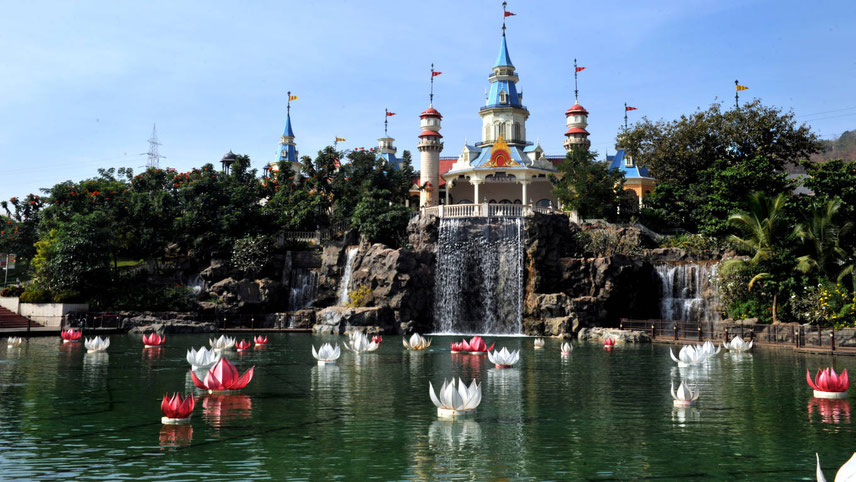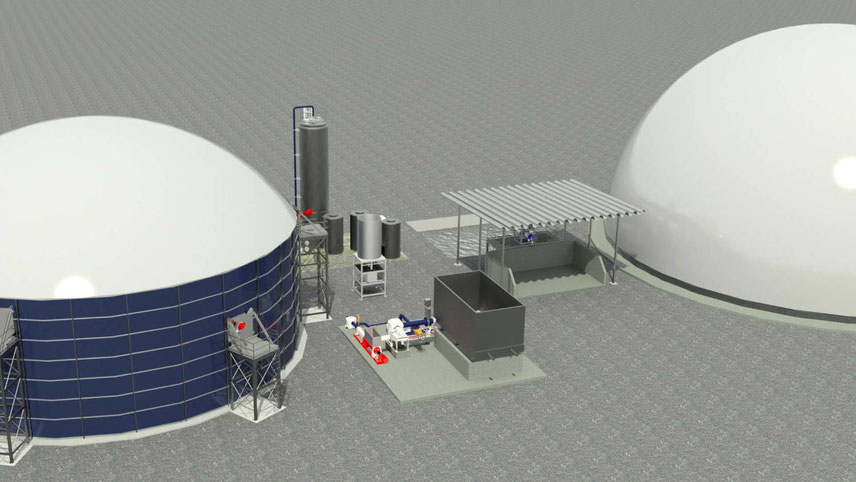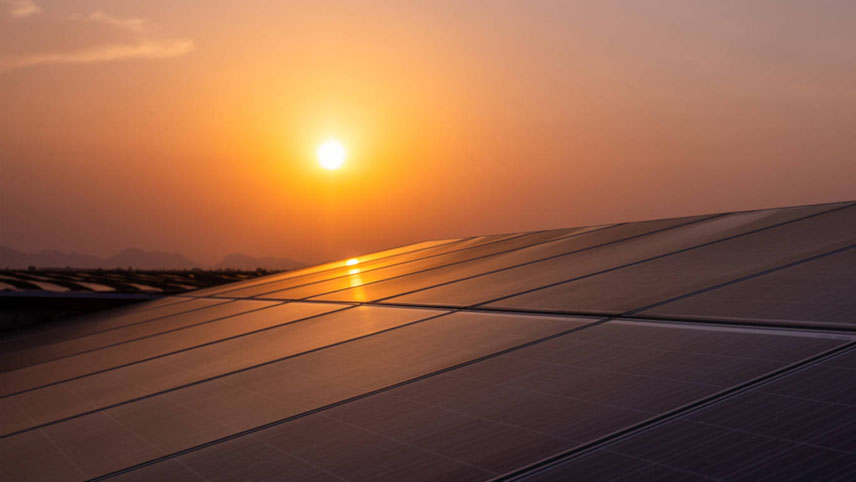-

Sawant: 'come and grow with Goa'
Anirudh Agrawal, the local head of the industry association CII and MD of Agrawal Renewable Energy, confirms that the slow but steady expansion of the manufacturing base has been a striking chapter in the evolution of Goa's economy in recent decades. “About 20-25 years ago, a lot of incentives and subsidies were announced to promote local manufacturing, and that has worked well. Pharma companies, especially, have been at the forefront of capitalising on the opportunities that were offered to them,” he says.
It is also important to take into account the fact that mining, a traditional stronghold of Goa's economy with iron ore being the main reserve, suffered a serious setback in the last decade when the Supreme Court twice banned mining activities (the last time in 2018 when the apex court quashed the renewal of 88 mining leases).
At its peak around the beginning of the last decade, mining was believed to be among the major drivers of the state economy, and an estimate suggests it accounted for one-fifth of the state's revenue at that time (around 18 per cent). Senior officials admit that the mining fiasco of the last decade has been a considerable setback.
“There is no denying the fact that it was a setback. It was generating so much revenue, and so many stakeholders were involved in this,” stated Reginaldo Lourenco, Chairman of Goa-IDC. However, the decks for restarting mining have recently been legally cleared, and state officials are exuding confidence that this line of activity will once again become part of the mainstream Goan economy in the coming years.
While mid-scale manufacturing rose, the mining business nosedived in Goa over the past decade as a result of the court’s decisions. Another major development has been the expansion of the casino business as the new unique selling proposition (USP) of the state's economy. The industry, which took off around the beginning of the millennium, is now estimated to be generating over Rs1,000 crore in annual revenue, contributing hefty licence fees to the state coffers.
"The growth of the casino or gaming business has certainly given a boost to the tourism sector. It has triggered a new segment called weekend tourism from neighbouring states and attracted more tourists from all over the country. Though it is yet to become a USP for high-end foreign tourists, the segment is receiving government support unequivocally. It is a formidable vertical of the Goan economy that has made some impact," says a prominent local businessman.
Last year, when the GST council increased the taxation slab for casino gambling, online gaming, and horse racing, the Goa government opposed it, asking for the tax collection modality to be based on the gross gambling revenue (GGR) rather than the face value of purchase transactions. Despite hurdles, those deeply rooted in the Goan economic landscape strongly believe that this line of business will continue to grow in size.
-

Verna industrial estate: the fulcrum of pharmaceutical production
Comprehensive policy push
India’s smallest state struggled after experiencing a low growth rate trajectory for two years following the Covid-19 pandemic. However, in fiscal 2023-2024, it nearly reached double digits, with a growth rate of 9.4 per cent over the previous figure. The cumulative worth of the state economy was estimated to be close to Rs1 lakh crore (over $12 billion). In the same year, the state government's earnings grew by 11 per cent, and the economy was reported to be in a revenue surplus.
These are undoubtedly small numbers in comparison to bigger states. Nevertheless, prima facie, they reflect the positive fact that the current government is now endeavouring to expand by promoting new growth drivers. In recent years, a slew of new policies has been unveiled to create a more conducive all-round growth environment.
These include the Goa Industrial Growth and Investment Policy (2022), Goa Startup Policy (2021), Goa Telecom Infrastructure Policy (2020), Goa Logistics & Warehousing Policy (2023), Goa Electric Mobility Promotion Policy (2021), State Single Windows Act, and Goa Industrial Development Corporation Regulations (2023).
These policies are laden with incentives to draw the attention of investors who have numerous options in the country today. For instance, the IT and Startup policy promises rental subsidies for leased premises, employment subsidies for engaging local employees, seed funding for start-ups, and reimbursement of patent filing fees.
An umbrella scheme implemented by the Directorate of Industries, Trade, and Commerce facilitates partial reimbursement of interest paid on term loans and offers incentives for green investments and local purchases. The state government's new Logistics and Warehousing Policy 2023 provides for capital and interest subsidies of up to Rs25 lakh per unit, subsidies for technology deployment and land conversion, and incentives for skill development and setting up start-ups in the supply chain domain.
"If you look at the broader nature of our recent policy initiatives, we have taken into account all factors that will significantly improve the ease of doing business in the state. We are even providing easy exit norms as part of the ease of doing business regime," says Pravimal Abhishek.
There are subtle indications from the state government that in its endeavour to invigorate the Goan economy, it has opted to offer a comprehensive package that is competitive. For instance, under its Industrial Growth and Investment Policy, the government has decided to list land parcels of private landowners willing to lease land for industrial purposes.
The policy aims to give a significant boost to the development of infrastructure assets such as food parks, logistics parks, and convention centres under a PPP model. It also promises incentives for training and the creation of ancillary industries. State government officials also highlight the easing of documentary and licensing provisions in recent years to provide relief to existing and prospective players.
For instance, there has been a drastic 50 per cent reduction in all tourism licences, trade licences, electricity, and consent to establish and operate. Similarly, the periodicity of existing licences has been significantly increased – tourism licences have been extended from 3 to 5 years and factory licences to 10 years.
-

Goa's tourism sector is already on a firm footing
Biting the bait
According to a senior official of the Goa Investment Promotion Board, there has been a steady trend of private investment in recent years. Between 2021 and 2023, the state government approved 71 projects totalling an investment of Rs3,948.16 crore. The sectors that have attracted recent investments include electronics, food processing, tourism, and pharmaceuticals. To further drive this investment momentum in the coming years, the government has identified nearly half a dozen domains, which include advancing to the next level in existing strongholds and establishing or expanding new ones.
In tourism, one of the main pillars, the focus now is on developing niche tourism products such as oceanariums, theme parks, convention centres, and promoting high-end water and adventure sports. For the promotion of food processing industries, the government has allocated around 4,000 hectares of marshy khazan lands for shrimp farming. I
nformation technology, IT hardware and electronics, pharmaceuticals, and biotechnology are other leading sectors expected to propel the local economy to the next level. Last but not least, the state government is keen to develop the state as a logistics hub. In fact, one of the key highlights of the investment summit was the leading supply chain firm TVS Logistics signing an agreement to invest Rs125 crore in the state to create a logistics park.
“We have cut down on all kinds of red tape, and the double engine effect has begun playing out in Goa too,” the chief minister told the audience unequivocally at the summit. But the crucial question remains: will the industry fully embrace the state government's initiatives? The answers are not straightforward, especially for specific domains, even though nobody doubts their potential.
“The idea to develop a logistics hub is commendable, but a hub typically emerges when it is close to a significant consumption centre, manufacturing hub, or a bustling transit point. In the case of Goa, we may need to explore alternative models rather than relying solely on the typical hub-and-spoke formula," notes Anil Sayal, President of Safexpress, one of the country's leading logistics players, which operates a vast network of logistics parks nationwide (including a unit in Goa).
When this aspect is raised with the industry minister, he strongly emphasises the serious potential for establishing a logistics hub. "There are large parts of the hinterlands of Maharashtra and Karnataka that are quite close to Goa, which we can serve," says Godinho. Meanwhile, local business associations highlight the absence of a container terminal at the local port of Mormugao (a major port), which has hindered the optimal utilisation of this facility and could have provided a significant boost to non-bulk trading from the state.
-

Gaming business has given a boost to the tourism sector
In other domains like IT, where Goa aims to develop some strength, the traditional aspiration, as industry veteran Ashank Desai (Chairman of Mastek) pointed out, holds little meaning today, as the IT industry in the country has matured. "Goa should be encouraging start-ups to establish their base, which would be quite convenient for them as they don't require large-scale establishments. This should become the melting pot for IT and other new-age businesses. It should evolve as a knowledge hub that serves beyond IT," he emphasised.
"Karnataka and Telangana are the leading states for traditional IT operations. However, a state like Goa, with strong policies and gender equality provisions, can still make a mark and carve a niche for itself. Dubai, which is emerging as a leading blockchain centre, serves as a good example," added Jagdish Mitra, President of Tech Mahindra.
Despite mild reservations, it is undeniable that business interest in Goa is now on a definitive upward trajectory. As a senior representative of an industry association points out, hosting mega international events like India Energy Week is shining the spotlight on the state, which will have a positive impact in terms of bridging the gap between the state and prospective new investors.
Surprisingly, as the industry minister notes, a new support line to fuel Goa’s economic ambitions has emerged organically after the Covid crisis. The state has witnessed an influx of a substantial volume of well-established professionals from elsewhere who have shifted their base to Goa (making it their first rather than second home) and are now creating new business avenues. The beach power seems ready to make incremental contributions in a way that was not even anticipated by the government.
-

Godinho: ‘we only want clean and green industries’
Mining business will get another chance
In an exclusive conversation with Business India, Goa’s Industry Minister Mauvin Godinho explains the broader elements of the government’s plan to make Goa and economic powerhouse in its own rights. Excerpts:
Through this summit you are trying to send the strong message that the Goan economy extends well beyond tourism. But how formidable is the challenge to dilute perception that Goa is tourism-centric?
Tourism itself is an industry which promotes various sectors – hospitality, transportation, Industry thus encompasses everything, even tourism-related activities. Goa is a great tourism brand but we have manufacturing strength as well. Don’t forget we contribute 10 per cent of pharma exports to the world and Verna industrial estate is a premier manufacturing hub among 23 industrial estates. Not many would know that some components of Chanrayan were also built here. Then there is a company which makes machines for printing notes. The point is that such sophisticated industries do exist in Goa. But we are a very small market locally and there have been transportation, labour, and raw material procurement issues. Slowly, the system has begun evolving and industrial activities have begun picking up. We are primarily focusing on eco-friendly businesses and moving ahead.
Even with your best efforts, how many years do you think it would take to change that perception?
The scenario is clearly changing. We are now making concerted efforts. We are further ahead than other states with the digitisation process that has been introduced to help our investors. But I would like to caution that we would not encourage any kind of industry. We know that would be a challenge for us. We only want clean and green industries.
There are experts who strongly believe that competitive federalism is best exemplified in the country in the way some leading states are competing to attract more investment. Do you think at some stage you have the potential to get into this race? Or since you are late to the game, will you set your own course?
We would not like to copy or adopt other models. We would like to develop our own ecosystem. We received a setback earlier on mining because of the Supreme Court decision. The entire industry almost came to a halt. The mainstay of the economy was tourism and mining at that point of time. We realised that manufacturing has got scope and we moved forward with a particular roadmap. We will continue to do so and that is why new policies have been initiated and we have made the entire process more transparent.
Will the mining business get another chance?
It has already been cleared by the Supreme Court. First of all, activities will begin around the existing mining dumps. Then fresh mining will also start. In the next six months, you can expect to see some action.







































